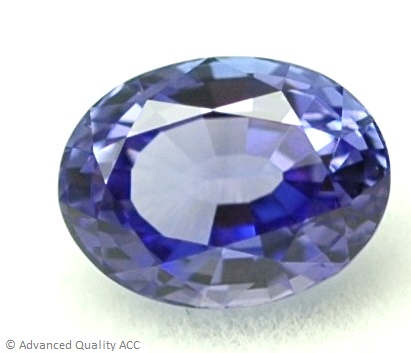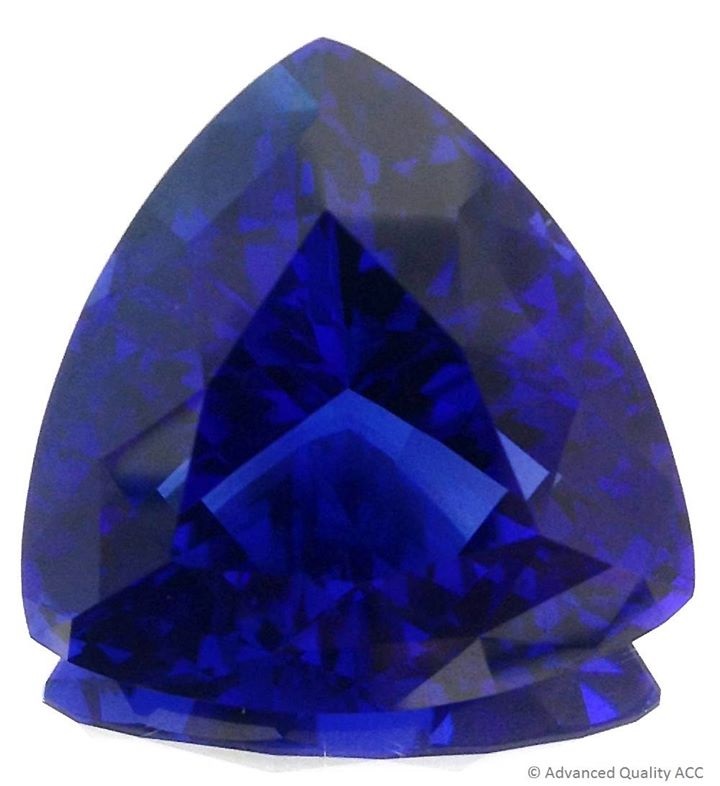Tanzanite is one of the most important gemstones discovered in the 20th century. It was discovered in 1967 in Tanzania, hence its name coined by Tiffany & Co.
Tanzanite is a rare transparent brownish Green variety of the zoisite species, a calcium aluminium hydroxyl sorosilicate mineral [(Ca2Al3(SiO4)(Si2O7)O(OH)) + (Cr,Sr)], which dramatically changes its appearance to an attractive blue to violet color under low heat treatment. Tanzanite is considered, along with the sapphire, to be the finest blue to violet stone in existence, and its distinct trichroism phenomenon produces a unique appearance.



LEGEND AND LORE
Tanzanite was added in 2002 to the birthstones of December, sharing this title with zircon, turquoise and blue topaz. It is also the gemstone representing the 24th wedding anniversary.
Tanzanite is known to uplift the spirit and open the heart. The blue and purple hues of Tanzanite are associated with generosity and friendship and are helpful in facilitating communication. It is also thought to help one contend with change and solve problems. It is believed to inspire compassion and to encourage calmness and is therefore useful in treating psychological disorders, stress, and nervous tension. Tanzanite helps in overcoming experiences of fear and crises, and in re-building trust.


TANZANITE COLORS
The name, Tanzanite, refers to transparent zoisite gems that possess colors ranging between Blue (22) and Violet (25) in all tone and saturation levels.
The most common and most desired colors for tanzanite gems are violetish Blue (23) and bluish Violet (24).
Some of the unearthed tanzanite crystals originally possess blue to violet colors without having to undergo any heat treatment. These colors, which have been produced naturally in the depth of the earth, tend to be slightly different from the ones obtained through heat treatment by man – they show a gentle tint of greenish Blue color. In smaller stones, this property is insignificant and all the untreated gems are heated to try to improve the color. However, in larger sizes, such stones may be granted a price premium, and therefore, not all gems would be heated.

TANZANITE SOURCES
Tanzanite is endemic only to the Merelani Hills, near the city of Arusha and Mount Kilimanjaro in Northern Tanzania. This is the world’s only source gem-quality tanzanites. The mines area, only a few square kilometers in size, was divided in 1990 by the Tanzanian government into 4 mining blocks, A, B, C and D. Todays, Block A is licensed and operated by Kilimanjaro Mines Ltd., Blocks B and D are allocated to small-scale miners and Block C is operated by the TanzaniteOne Group.
PHYSICAL PROPERTIES
Variety: Tanzanite
Species/Series: Zoisite
Chemical Composition: calcium aluminium hydroxyl sorosilicate mineral [(Ca2Al3(SiO4)(Si2O7)O(OH)) + (Cr,Sr)]
Crystal System: Orthorhombic
Color: Blue to violet
Hardness: 6.0 to 7.0
Refractive Index: 1.691 to 1.70 (±0.005)
Specific Gravity: 3.35 (+0.10/-0.25)
Properties: RI 1.691-1.700 HARDNESS 6-7 SPECIFIC GRAVITY 3.35 SPECIES-ZOISITE OPTIC CHARACTER-DR PHENOMENA-CHATOYANCY(RARE)
Reactions: Ultrasonic: never Steamer: never Heat: very poor;sudden temperature changes may cause cracking
Major Sources: Tanzania
Grading Information: GEM, AAA, AA, A+, A, B
Enhancement Code: Heated to enhance color
Specific Gravity: 3.35





a.jpg)



